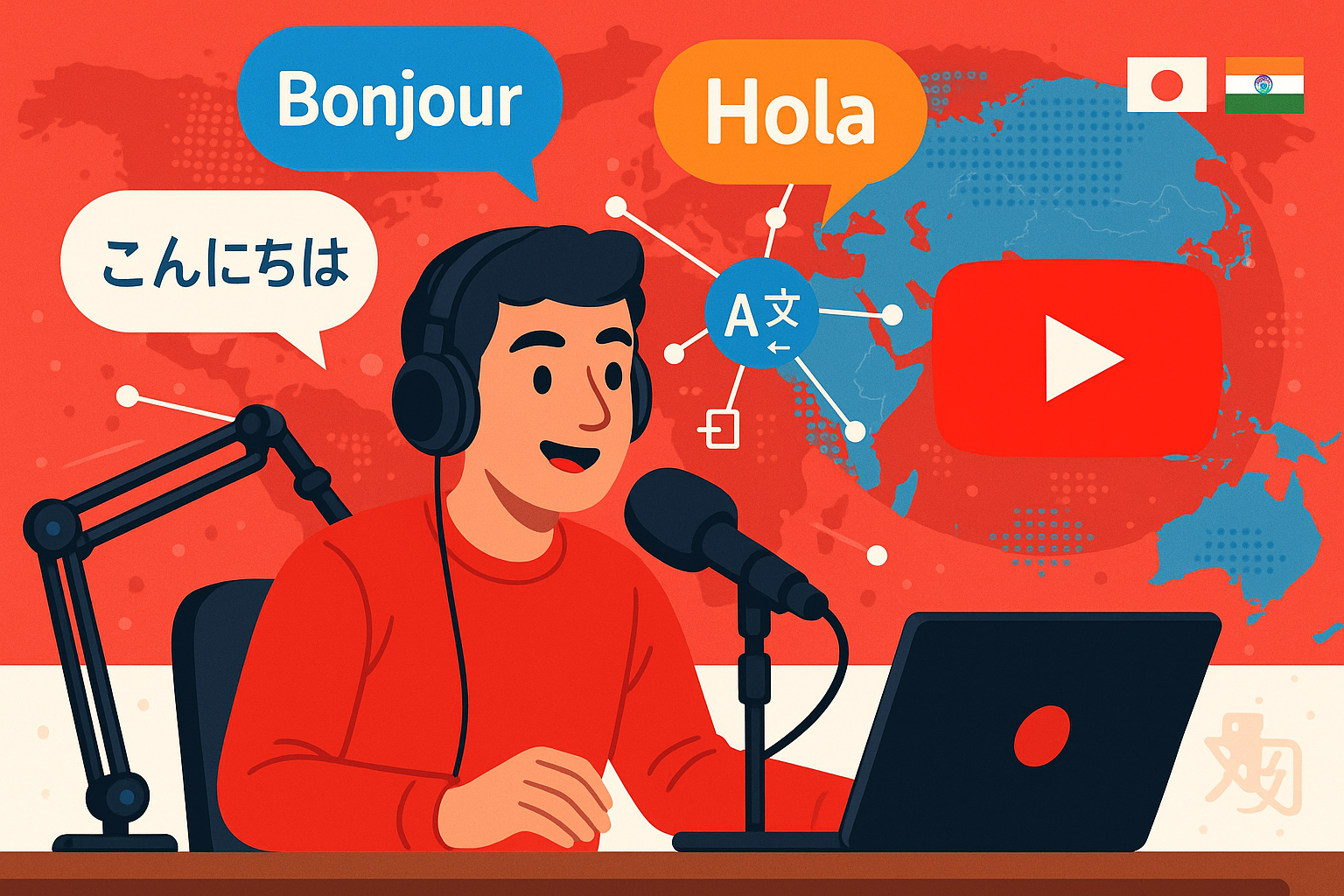Ready to reach viewers worldwide? YouTube’s game-changing auto-dubbing tool has just gone mainstream, and it might revolutionize your channel’s global strategy.
YouTube has officially rolled out its AI-powered automatic dubbing feature to all creators enrolled in the YouTube Partner Program. This powerful tool instantly translates your videos into multiple languages, breaking down language barriers and potentially expanding your audience reach dramatically.
What Languages Are Supported?
The auto-dubbing technology currently supports translation between English and eight languages:
- French
- German
- Hindi
- Italian
- Spanish
- Indonesian
- Japanese
- Portuguese
This means English content can be dubbed into these languages, and content in these languages can be dubbed into English.
How It Works: The Technical Details
The feature is enabled by default on all eligible channels. When you upload a new video, YouTube’s AI will automatically generate translated audio tracks in the supported languages. These versions will be marked as “auto-dubbed” in the video description, maintaining transparency with your audience.
Important: Auto-dubbing only works for newly uploaded videos and cannot be applied to previously published content. This means the sooner you start utilizing this feature, the more of your content will be available to global audiences. Creators who want to maximize their international reach should enable this feature immediately rather than waiting.
Viewers have full control over their experience – they can easily switch between the original audio track and any available dubbed version through the video settings menu.
Important Limitations to Consider
Before you get too excited, it’s worth understanding the current limitations:
- Emotional tone doesn’t transfer: The AI dubbing doesn’t capture the emotional nuances, tone variations, or expressiveness of the original audio.
- Best for informational content: Due to the tone limitation, the feature works better for straightforward informational videos rather than highly expressive content.
- Potential inaccuracies: The automatic translations may contain errors due to mispronunciations, accents, dialects, or background noise in your original video.
- Translation challenges: The system may struggle with proper nouns, idioms, and specialized jargon.
- Voice matching limitations: The AI may not perfectly match the dubbing voice to your original voice characteristics.
Managing Auto-Dubbing for Your Channel
How to Turn Off Auto-Dubbing
If you prefer not to have your videos automatically dubbed:
- Sign in to YouTube Studio on your computer
- Navigate to Settings → Upload defaults → Advanced settings
- Uncheck the “Allow automatic dubbing” box
- Click Save
How to Review Dubs Before Publishing
For creators who want more control:
- Sign in to YouTube Studio
- Go to Settings → Upload defaults → Advanced settings
- Check both the “Allow automatic dubbing” and “Manually review dubs before publishing” boxes
- Choose either “Review dubs in all languages” or “Review dubs in experimental languages only”
- Click Save
Managing Individual Videos
You can also preview, publish, unpublish, or delete automatic dubs for specific videos through the Languages tab in your video settings. This gives you granular control over which translations are available to your audience.
Important Note
Currently, YouTube does not allow creators to edit the auto-generated dubs. Once generated, your options are limited to:
- Previewing before publishing
- Publishing the dub as-is
- Unpublishing a dub (you can republish it later)
- Deleting a dub permanently (cannot be recovered)

